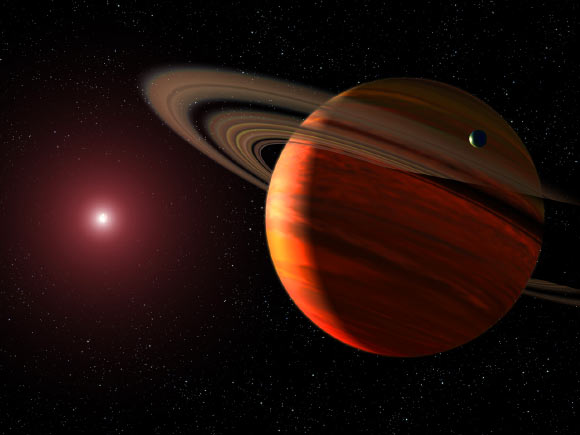An international group of astronomers from the United States, Australia, Chile, Germany, and Hungary, has discovered an extrasolar gas giant orbiting very close to a small cool star called HATS-6.
HATS-6, also known as MASS 05523523-1901539, lies at a distance of 484 light-years from Earth.
It is a 15th magnitude M-dwarf star, which is one of the most numerous types of stars in our Galaxy.
Although M-dwarfs are common, they are not well understood. Because they are cool they are also dim, for example, HATS-6 emits only 1/12th of the light of our Sun.
“We have found a small star, with a giant planet the size of Jupiter, orbiting very closely. It must have formed further out and migrated in, but our theories can’t explain how this happened,” said Dr George Zhou of the Australian National University, a co-author of a paper published in the Astronomical Journal (arXiv.org preprint).
The newly-discovered exoplanet, named HATS-6b, was discovered by the HATSouth survey, a global network of fully-automated wide-field photometric instruments searching for transiting planets.
HATS-6b has the size of Jupiter and the mass of Saturn, and orbits its host star every 3.3 days at a distance of approximately 0.04 AU.
“The planet has a similar mass to Saturn, but its radius is similar to Jupiter, so it’s quite a puffed up planet,” Dr Zhou said.
“Because its host star is so cool it’s not heating the planet up so much, it’s very different from the planets we have observed so far,” he added.
“The atmosphere of this planet will be an interesting target for future study.”
_____
J. D. Hartman et al. 2015. HATS-6b: A Warm Saturn Transiting an Early M Dwarf Star, and a Set of Empirical Relations for Characterizing K and M Dwarf Planet Hosts. Astronomical Journal 149, 166; doi: 10.1088/0004-6256/149/5/166








